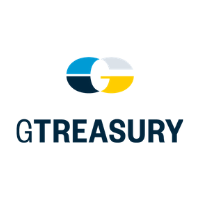Some DeFi protocols allocate so called “governance tokens” to reward users for engaging with the system and for conducting or supporting different types of transactions. Participants typically earn tokens by interacting with and providing services to a protocol, for example by providing liquidity in a decentralized exchange or collateral on a lending platform.
These governance tokens generally give users a right to returns from the project and allow users to vote on changes proposed to the protocols. Because of these associated rights, governance tokens have value and are tradeable. This structure gives a wide range of holders the ability to contribute to a project’s governance and evolution by voting on proposals to change the protocol and, therefore, its incentives and operations.
DeFi platforms
DeFi does not just build financial services natively as software, but it recreates the entire ecosystem of finance on novel technical foundations, so-called DeFi platforms. These platforms are consumer-facing financial interfaces that require blockchain technology and crypto stakers (the transaction processors) to operate. The blockchains thereby act like digital highways allowing DeFi transactions to move. Several decentralized platforms exist including decentralized exchanges (DEX), lending and borrowing, trading (complex) derivatives, insurance, asset management etc.
Decentralised exchanges
Decentralized exchanges (DEXs) are marketplaces that allow the trading of digital assets without any centralized controller. They replace the market-making and custody features of exchanges with a powerful algorithm that dynamically adjusts prices and executes trades based on available liquidity. Automated market makers (AMMs) have become a popular means of providing liquidity. They match buyers and sellers of digital assets or let them “swap” one cryptocurrency or tokens for another (exchange trading). Rewards on this platform results from providing liquidity in token pools. Well known examples are Uniswap and Justswap.
DeFi lending platforms
And there are decentralized lending platforms, that allow holders of cryptocurrencies to lend anonymously vast sums of funds instantly to people who want to borrow, provided that they can provide enough collateral to deposit in a smart contract and settle the loan within an agreed timeframe. Lenders earn interest on the loaned amount (credit intermediation). Some DeFi protocols offer crypto loans against fiat collateral and vice versa. Apart from loans, DeFi users can borrow a token to participate in blockchain activities such as governance. Leading examples are Compound, Makerdao, and Aave.
DeFi derivatives platforms
DeFi derivatives platforms establish markets for synthetic assets, in which users can establish derivative positions in cryptocurrencies while posting collateral to support those positions (derivatives trading). They automatically track the value of commodities, stocks, indices, or any combination of financial instruments. Most known example is Synthetix.
Other DeFi platforms
Other DeFi platforms offer insurance, asset management, and other higher-order financial services, to maximize portfolio returns, as well as collateralising crypto assets for proof of stake or liquidity provision.
Non-Custodial Lending Platforms
Cryptocurrencies have further extended into the world of DeFi through the recent creation of non-custodial lending platforms. These are decentralized markets where users participate as depositors or borrowers. The concept of these lending platforms are designed to mitigate any potential losses or defaults through controlling collateral on the blockchain. Retail lenders are able to quickly liquidate unhealthy loans on these lending platforms through the underlying technology of the platform itself. DeFi pools also have the potential of opening up liquidity in cross-jurisdictional markets that have previously not been able to transact. DeFi users are (theoretically) able to extend credit and liquidity through cryptocurrencies to users across the globe, including markets in developing countries that traditionally do not see influxes of western funds.
New DeFi services
Thanks to DeFi, users can now obtain financial services such as margin trading, yield farming, liquidity mining, and crypto staking on a distributed ledger. Especially staking platforms and yield farming protocols have surged in popularity. Yield farming is a tool to help provide network liquidity. It is “the act of hunting for rewards” by interacting with DeFi protocols, by temporarily putting depositing assets as collateral in a liquidity pool, that could be used by others including investors and start-ups, in exchange for financial rewards. Liquidity mining is a specific form of yield farming, in which digital asset owners provide liquidity to DEXs (Decentralized Exchanges) in return for rewards. Since DEXs historically suffered from low liquidity, this is an important development for the ecosystem as well as a major source of revenue for some digital asset investors. While liquidity miners and yield farmers add funds to liquidity pools, stakers either hold funds in a wallet or delegate their coins to a validator node. This involves locking assets in a wallet in order to gain governance rights and token rewards in proof of stake (PoS) blockchain’s native asset.
DeFi market
Decentralized finance has been one of the fastest-growing crypto sectors since 2019. Interest in crypto and decentralized finance (DeFi) rose sharply during the Covid-pandemic and investment has accelerated. Though decentralised finance is still in the beginning stages of its evolution, the total value locked into DeFi of various types (collateral pools, DeFi smart contracts/protocols) in leading platforms such as Maker, Compound, Uniswap and Aave has grown from less than US$1 billion in 2019 to over US$90 billion early June 2021.
This rise was fuelled in part by investors looking for increased transparency and control of their funds regarding its open network as an attractive alternative to traditional banking. Another reason for the firm growth was the maturation of stablecoins, i.e. cryptocurrencies designed to track the value of stable assets, such as the US dollar. And there was the emergence of incentive structures, such asyield farming and governance tokens, through which participants can earn returns for providing liquidity to DeFi services.
DeFi and benefits
Using DeFi applications has a number of interesting advantages beyond the traditional financial services, in terms of easier access to financial products and liquidity, improved market efficiency, enhanced financial privacy, lower fees and faster innovation.
Easier access
The protocols are easily accessible, making it possible for everyone to experience banking-like services. DeFi applications not only make financial services accessible but also affordable. Besides moving between protocols is relatively frictionless because users have full control of their assets/funds.
Peer-to-peer trade
Since dApps power the ecosystem without intermediaries thereby using self-executing codes that envisage the outcome and resolution of activities on these platforms, it allows for a flexible, direct person-to-person trade with high levels of transparency and zero requirements for joining.
Availability
There are also (theoretical) benefits for international financial transactions. The distributed nature of DeFi platforms and protocols makes them available across the world. The idea is that with a cheaper alternative, remittance charges and commission fees will drop, and currency conversion will have to get cheaper to be more competitive.
Improved market efficiency
Individuals can also borrow of these platforms instantaneously by using crypto assets as collateral. This automation may increase the speed of financial transactions, decrease costs, and—given enough time—broaden the availability of these services.
Lower costs
Such decentralised and non-custodial platforms have low start-up and entry costs as market entrants often remain unregulated and have minimal operating and regulatory costs. The absence or lack of central intermediaries makes it hard for regulators to forbid DeFi services.
Innovation
It may also lead to new types of services, triggering further innovations. If a community of users is displeased with the service provided by a protocol, that community can vote to change the services supported by it or can fork the existing open source code base and develop a new protocol to meet the community’s needs better.
DeFi and risks
DeFi is an emerging phenomenon that comes with various risks, such as user errors. Who takes responsibility for any mistakes done during a transaction as blockchain is nearly impossible to alter?
And there is the smart contract vulnerability. The engine that runs DeFi applications is embedded in the code bundled together to make a smart contract. When this code has a flaw, it exposes the entire project leading to loss of funds.
Software systems may also malfunction due to a wide variety of factors. For example, what if an incorrect input causes a system to crash? Or, if a compiler which is responsible for composing and running codes makes a mistake. Who is liable for these changes?
While many DeFi tokens have already delivered lucrative returns, they come with considerable risk and price volatility that exceeds that of established digital assets like Bitcoin and Ethereum. Their lower liquidity means that they are more prone to large price swings.
And the anonymity of participants in DeFi transactions, makes it vulnerable for cyberattacks, hacks, scams, false, misleading, or greatly exaggerated recommendations. This may lead to funds theft or loss, without any regulated recourse.
No consumer protections
DeFi has flourished in the absence of rules and regulations. DeFi users however do not receive the protection benefits of transacting with regulated intermediaries. In centralized finance banks are required by law to hold a certain amount of their capital as reserves, to maintain stability and cash you out of your account any time you need. In DeFi they do not receive risk disclosures. Protocols are not subject to risk management requirements, such as capital and liquidity requirements, that protect against loss of consumer funds and systemic risks. So DeFi users may have little recourse should a transaction go foul. There is no help desk or relationship manager to contact if a transaction goes wrong.
Present regulation
DeFi is currently subject to existing regulation laws. The regulatory frameworks that apply to cryptocurrency projects however do not regulate the specifics of DEFI. Their approach is still based on the presence and regulation of centralized intermediaries, and would not work for decentralised DeFi digital asset classes. DeFi transactions conducted between individual users through unhosted wallets would not be subject to existing regulatory requirements, including KYCand AML reviews.Because DeFi protocols support anonymized transactions, there is no meaningful way for market participants to determine what requirements apply to their DeFi transactions.
Regulators are puzzling
Regulators world-wide are gathering speed to step in. They however are puzzling how to deal with DeFi and how to fill the gaps. Considering the fragmented and diverse nature of the DEFI market the task for regulators seems impressive. Who and what is there to regulate? From a regulatory standpoint, DeFi poses several serious and multifaceted risks and challenges, that will become more serious as the market further grows. DeFi does not fit within the historic practical and regulatory model used for financial transactions.
No intermediaries
Present regulation assumes the presence of intermediaries, and it applies regulation to intermediaries as a way to regulate financial markets and related activities comprehensively. But why apply rules designed for centralized finance to decentralised non-custodial, open information DeFi systems?
Decentralised networks
Blockchain networks are decentralized and global, so participation in DeFi activities presently does not require interaction with the regulated financial system or other national legal regimes, such as taxation and national identity systems. How to look at these centralised networks from a regulatory standpoint?
Governance tokens
As with any new market, classification will be challenging. Governance tokens issued by DeFi projects may not constitute ‘investment contracts’ under securities laws. The absence of intermediaries and a wide dispersal of governance tokens may further weigh against governance tokens being subject to existing securities regulation. How are they going to be classified will determine under what regulatory regime governance tokens will fall.
Codes
Even when a corporate entity develops the software for a DeFi service, the service itself is just software code executing on a blockchain and accessible to all through the internet. This makes regulatory enforcement challenging. Using just the traditional financial services view to regulate the codes is not enough. They not only relate to just blockchain virtual assets, but also around automation and smart contracts more generally. These are very much linked and regulators need to look at those things together.
Source of information
It is also difficult to imagine a practical situation where a user of a DeFi platform is able to provide the source of information about an exchanged private or non-private crypto coin beyond one or two transactions. So what regulatory rules should apply?
WEF Policy Toolkit: regulatory clarity and balanced approach
Policy-makers and regulators are urgently looking for frameworks to address these issues responsibly. The World Economic Forum recently published a policy toolkit for decentralized finance, in a bid to assist governments around the world to appropriately address this phenomenon and help shape regulation of digital asset marketplaces between different countries. Regulators worldwide contributed to the policy document including representatives from lawmakers involved in creating the new European Markets in Crypto Assets (MiCA) rules. The toolkit provides a foundational basis for understanding and examining the critical factors concerning DeFi regulations that should drive policy-making decisions. Authors thereby call for technologically neutral approaches that can balance objectives of regulatory regimes and innovation and market development with policies that are fair, efficient and enforceable.
New regulatory approach: basic principles
As DeFi projects eliminate the need for financial intermediaries, regulators may need to fundamentally rethink their approach. They will need to step away from traditional thinking and take an approach that should have a number of basic principles.
Regulatory clarity
Regulation is key to, at least, set minimum standards to market participants in the DeFi industry, to protect capital and clearly define the regulatory treatment of all crypto-assets that are not covered by existing financial services regulation. Regulators will need to further clarify these guidelines for reporting entities a.s.a.p. to solidify international adoption.
No overregulation
In order not to frustrate full adoption in the DeFi world, government agencies will need to be more flexible in their approach. One should prevent too strict regulation as that could severely disincentivize people to enter the DeFi market. The approach should be based on disintermediation whereby regulatory bodies should look beyond the centralized intermediaries approach.
Balanced approach
To promote the development of the various DeFi markets, it is necessary to put in place a safe and proportionate regulatory framework to support innovation and fair competition. Regulators should thereby maintain an adequate balance between safeguarding positive blockchain-based financial innovation in terms of greater efficiency and broader inclusiveness in finance on one hand and limit the potential of these financial applications being misused for money laundering and terrorism financing.
Level playing field
Given the increasing interwovenness of traditional financial institutions and the crypto market that have to compete against a growing number of non-regulated decentralized and non-custodial DeFi platforms, traditional business may be adversely affected if they fail to compete on an equal basis against them. So regulators should follow a level playing field approach, based on functional and operational equivalency.
European DeFi regulation: MICA
Last year September the European Commission adopted the Markets in Crypto-Assets Regulation (MiCA) proposal. Aim is to improve harmonisation and legitimisation of how tokens are being regulated generally and the supervision of issuers and firms that qualify as crypto-asset service providers (CASPs). MICA would set clear rules of the crypto assets throughout the European Economic Area (EEA) establishing a common framework and avoiding inconsistencies. MICA thereby follows a technology, asset class and jurisdiction agnostic neutral approach.
MiCA aims to provide greater legal certainty, supporting innovation, ensuring appropriate levels of consumer and investor protection, promoting market integrity and financial stability and thus transform Europe’s current fragmented crypto-asset legislative and regulatory framework into a uniform approach. MiCA will apply to persons engaged in the issuance of crypto-assets and to crypto-asset providers in the EU-27. MiCA itself may be implemented as early as between mid-2021 and early 2022 and aims to be fully operational by 2024.
Main proposals
This new MICA regime clarifies which tokens will qualify as a “financial instrument” and thus fall under the existing financial services regulatory regime, as amended, and which tokens will qualify as “crypto-assets” and thus fall under MiCA’s specific regime for crypto-asset services (CAS).
Assessment of whether a digital asset will be a crypto-asset and subject to MiCA or a token that is a financial instrument subject to the existing financial services regime, will look at the substance over form and thus depends on the content of an instrument and not the technology behind it.
With MiCA, the European Commission intends to include stablecoins within the scope of the tailored MiCA regime on crypto-assets (to the extent not already regulated) and to modify the e-money regime to include a new type of e-money: “ ‘electronic money token’ or ‘e-money token’ means a type of crypto-assets whose main purpose is to be used as a means of exchange and that purports to maintain a stable value by being denominated in (units of) a fiat currency”
Other stablecoins are likely in scope as ‘asset-referenced tokens’, defined as: “a type of crypto-assets whose main purpose is to be used as a means of exchange and that purports to maintain a stable value by referring to the value of several fiat currencies, one or several commodities or one or several crypto-assets, or a combination of such assets.”
For stablecoins that do not fall within the above definition, the issuers must still publish a white paper, notify the regulator and may not refer to their coins as being ‘stable’. Stablecoin (being a type of ‘asset-referenced token’) issuers not already regulated as credit institutions or e-money institutions will need to be authorised and to publish a white paper approved by their home state regulator.
Issuers of ‘significant e-money tokens’ and ‘significant asset-referenced tokens’ will be directly regulated by the European Banking Authority (EBA) and will have additional obligations in respect of capital, interoperability and liquidity management.
ECB and MICA
In February this year the ECB published an Opinion on the current proposed form of MICA regulation. Their proposals generally aim to grant greater powers to the ECB, set prudential requirements for certain stable coin issuers and generally improve anti-money laundering and financial crime prevention measures.
The ECB is generally in favour of MICA’s aims and its contribution to harmonization of crypto asset regulation. The ECB however suggests several adjustments and clarifications, specifically calls for improvements, including greater scope of which tokens and what activity will fall under and be regulated by MICA and by which regulatory authority under MICA and what activity will be subject to the MIFIR/MIFID II framework. The ECB has called for changes to provide a clearer definition of what constitutes a crypto-asset and thus falls into MICA. This to help support the provision of crypto-asset services on a cross-border basis and to establish a truly harmonized set of rules for crypto-assets.
The ECB has suggested a distinction between crypto-assets that would be classified and thus treated as MIFID II financial instruments and those that would fall under the scope of MICA’s regulatory regime. Specifically the ECB has requested a number of changes concerning the supervision of stable coins i.e. what MICA defines as asset-referenced tokens (ARTs). The ECB asks for additional safeguards under MICA, including prudential and liquidity requirements for such issuers. And there is the issue of what financial stability and prudential supervisory aspects will require greater regulatory and supervisory oversight by the ECB, and how this will interact with oversight from other European authorities.
The way forward: regulatory sandboxes and safe harbors
Implementing full-fledged regulations right now however would be unwise. Regulators should get well-required time to gain experience in this new technology, interact productively with the DeFi industry, and provide informal regulatory guidance to them. In the meantime regulators can learn from techniques that are proving effective for the existing cryptocurrency market via so-called regulatory sandboxes. These could create a safe space for regulators and innovative services to work through the various issues. In addition, regulators should start with clarifying relatively easy cases first to provide guidance to the industry. This can give them enough time to solve the harder issues later, while ensuring market participants remain confident in the broad contours of the regulatory environment.
Because DeFi encompasses a broad range of applications and protocols, many of which may lie outside securities law, US SEC Commissioner Pierce suggested implementing a so-called ‘safe harbor’ policy with respect to DeFi and cryptocurrency projects. Disclosure requirements or safe harbors can encourage market participants to provide regulators with information that helps them better understand market dynamics and develop best practices. Without this safe harbor policy in place, it is currently impossible for someone to develop a truly decentralized system without potentially being in breach of securities law throughout the development process.
























